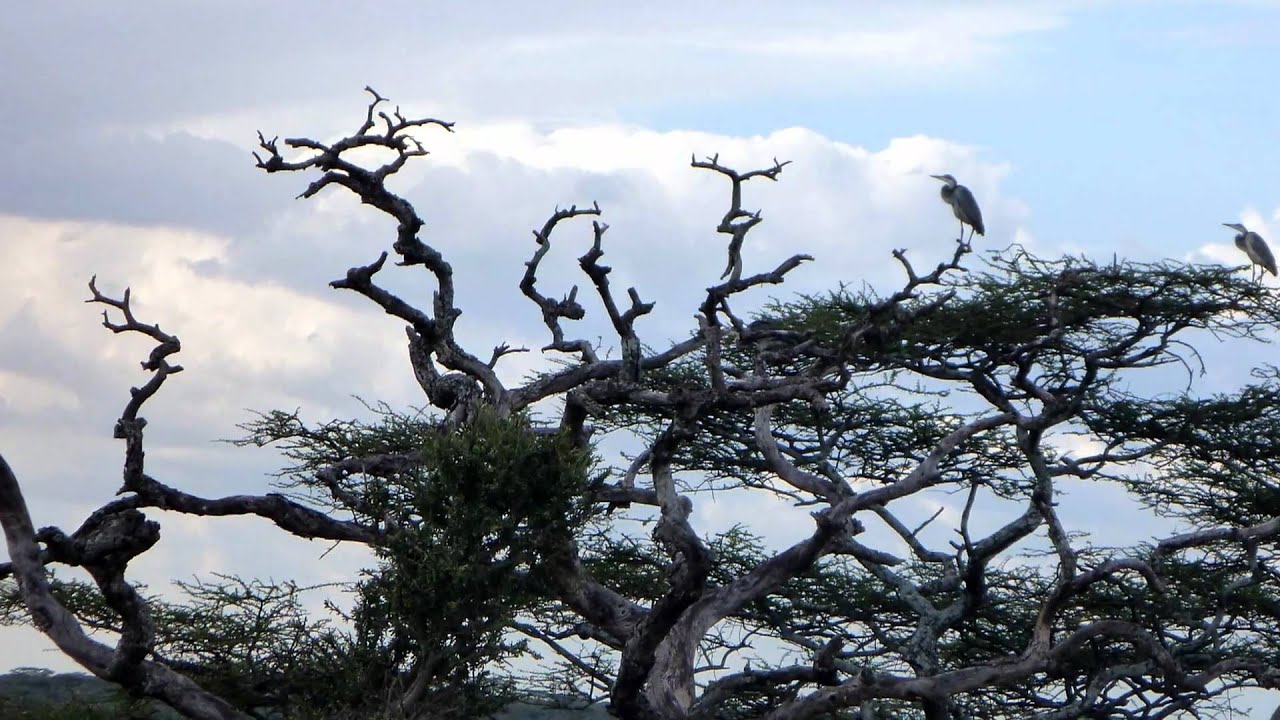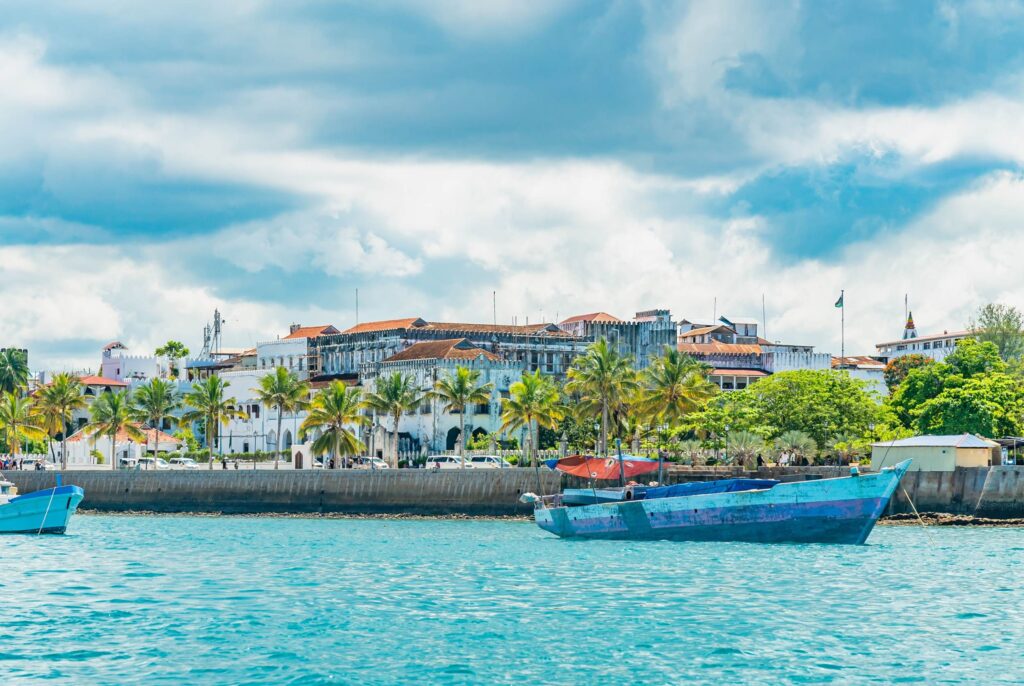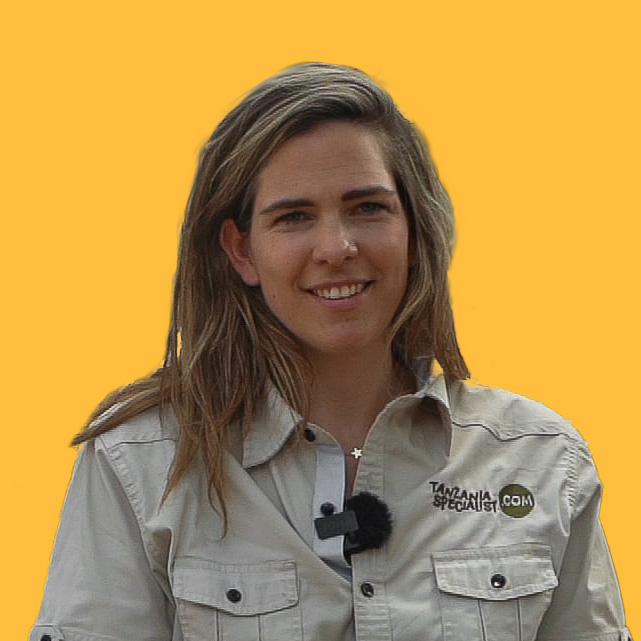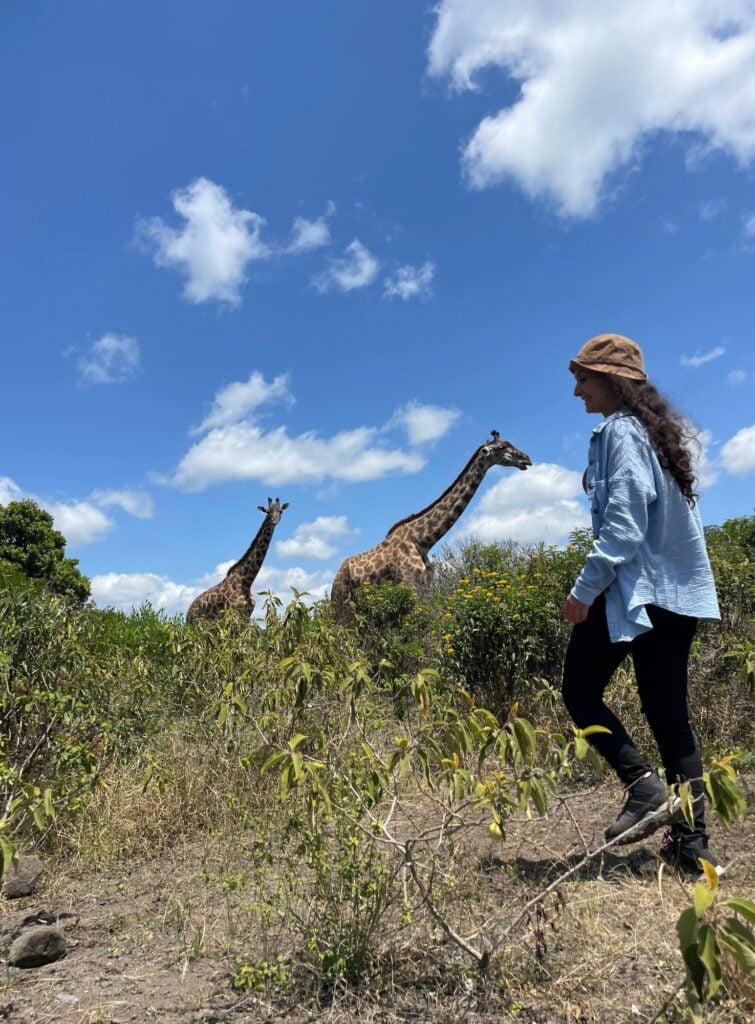
1 November 2022
As well as being home to lots of beautiful wildlife, Tanzania is home to lots of outstanding nature too. We have listed the most well-known and common Tanzania trees you will see during your safari.
If you love wildlife and nature, it is definitely worth to travel to Tanzania!
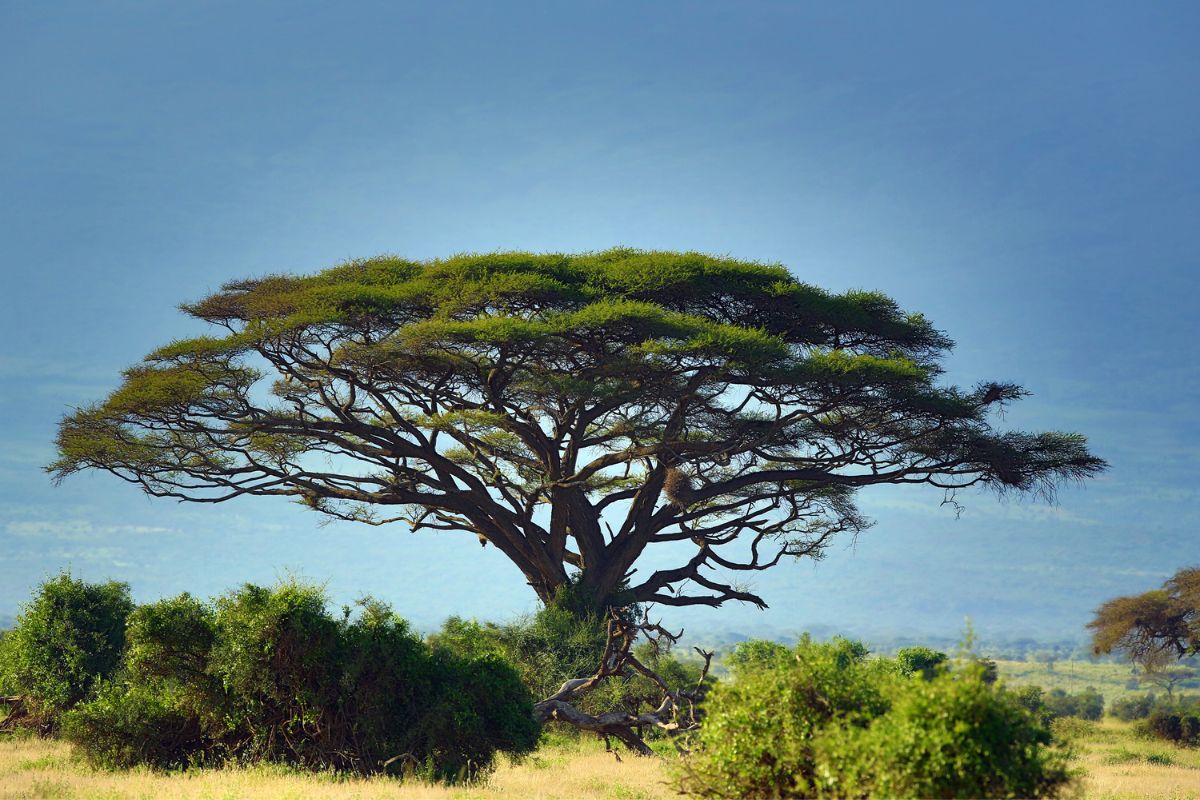
You might not have thought about it before, but during a safari, you will not only see lots of animals, but lots of nature too.
This is true across all the African countries, including Tanzania.
Common Tanzania Trees you might see on your safari
In this guide, we’ll be taking a look at some of the most common trees in Tanzania that you might see during a safari.
So, if you want to find out more, keep on reading!
Yellow Fever Tree

During your safari, it is likely that you will explore a variety of different types of habitat.
If you go near wet areas, such as the land bordering rivers, swamps and floodplains, then you might encounter a yellow fever tree.
Yellow fever trees are incredibly common in areas near water. They are tall and impressive trees, with wide branches and an easy to recognize, yellow bark.
It is this bark that gives these trees the “yellow” part of their name.
The “fever” part of the name comes from a time when people thought malaria was caused by the trees, rather than the proximity to water.
They are beautiful trees that you will almost certainly see during your safari.
Baobab Tree
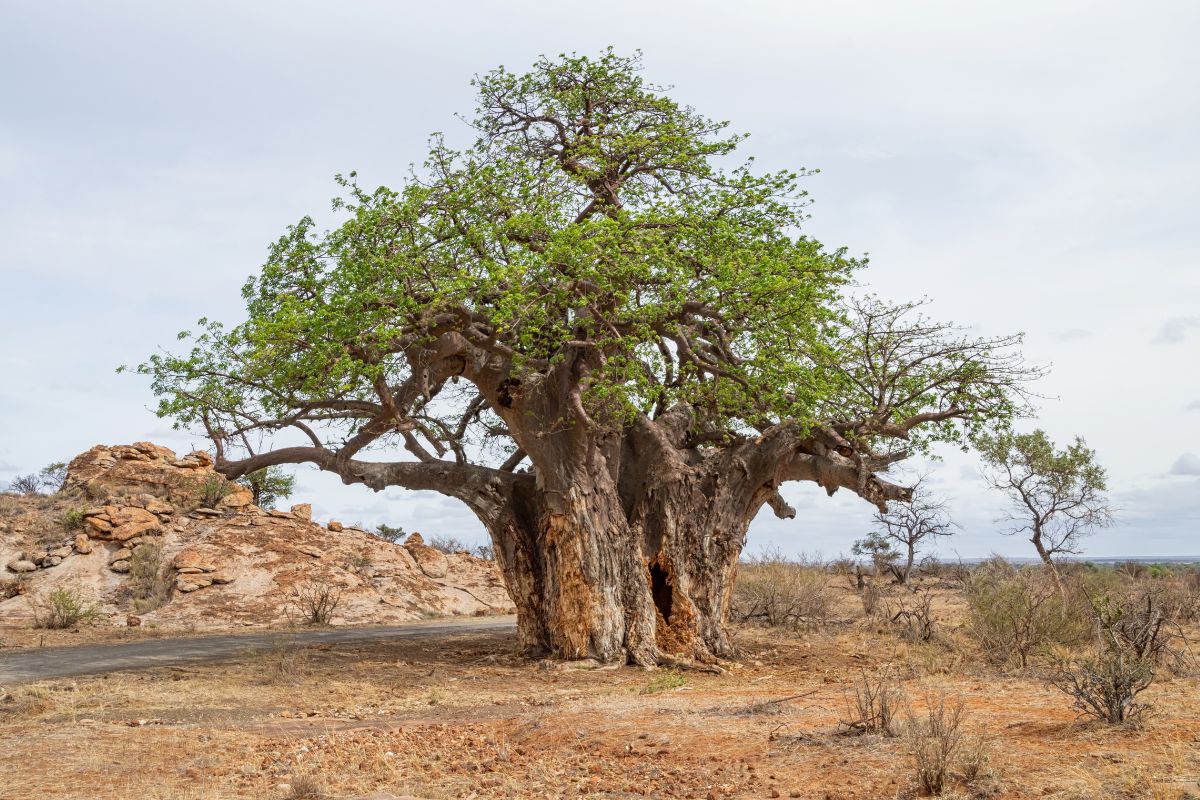
You may also encounter the baobab tree during your safari in Tanzania. There are more than 9 different species of baobab trees located around the world, and the species found in Tanzania is the largest.
Baobabs are affectionately known as upside down trees because their tangled branches look very similar to roots. Out on your safari, you will most commonly come across these trees in hot and dry woodland areas.
Baobabs are magnificent trees that you will find in various different areas of Tanzania, so there is a very good chance that you will encounter them during your safari.
Euphoria Candelabra
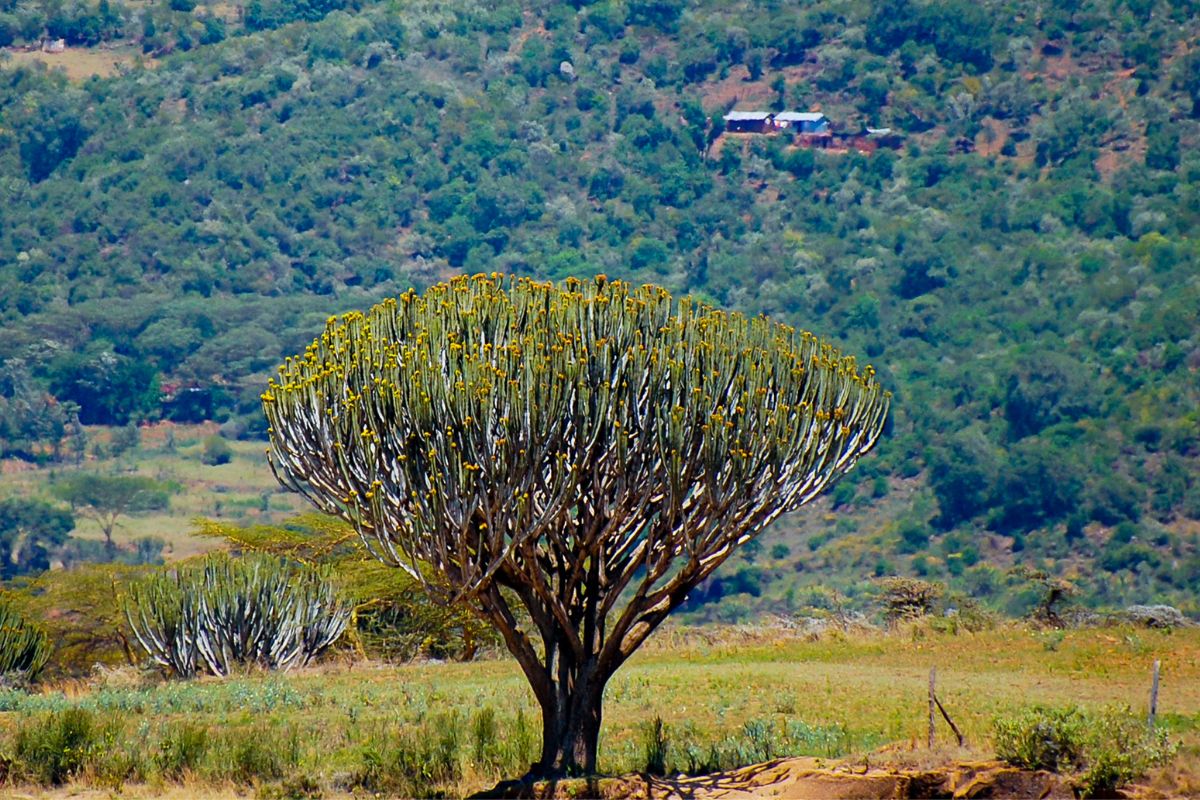
Another incredibly common Tanzania tree that you will encounter during your safari is the euphoria candelabra.
These trees are a type of succulent that exists on a massive scale in Tanzania.
It is due to the fact that they are succulents that they have such unique appearances.
Unlike many trees where the branches are solely near to the top of the tree, the branches of the Euphoria Candelabra start from around 3 meters up the tree, and continue upward.
Usually these trees only measure around 12 meters in height, however there have been some recorded instances where they have exceeded 20 meters.
While these trees are very pretty, it is often best to stay away from them as they actually release latex from them which is poisonous.
Exposure to this latex can cause skin irritation. So, it is best to observe these trees from a distance.
Wild Date Palm
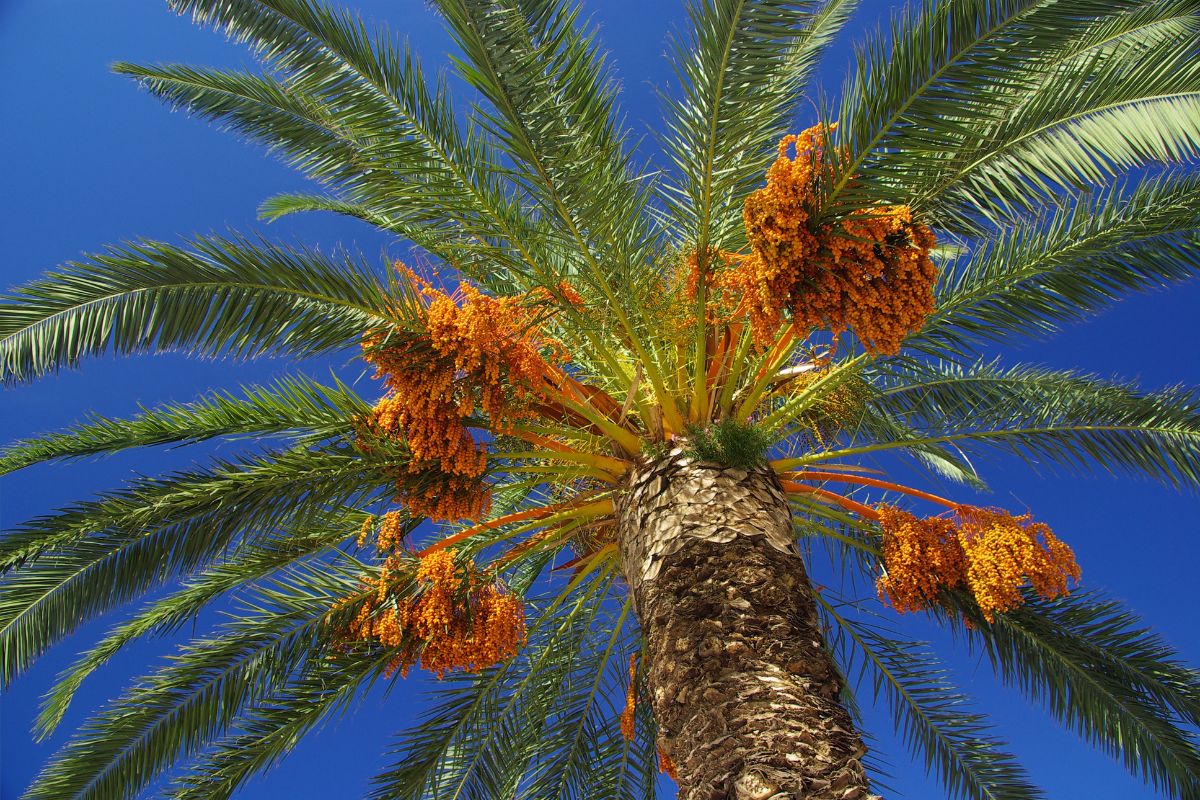
On the topic of trees in Tanzania that have a unique appearance, next up we have the wild date palm (Phoenix Reclinata).
This tree is very strange in the way that it grows in a variety of different habitats.
There doesn’t seem to be one specific set of conditions that this tree thrives in, instead you will find it thriving in various locations across Tanzania.
These trees tend to grow to somewhere between 3 and 6 meters in height, and tend to appear in clusters.
From a distance, these trees can look more like bushes than trees, simply because they grow so close together that the branches of the different trees tend to intertwine.
The wild date palm is a fruit-bearing tree. The fruit itself is edible, but it doesn’t taste very nice.
Instead, the sap of the tree is used to make palm wine in many areas of Tanzania. It is very likely that you will encounter this tree during your safari.
Acacia: the most common tree in Tanzania
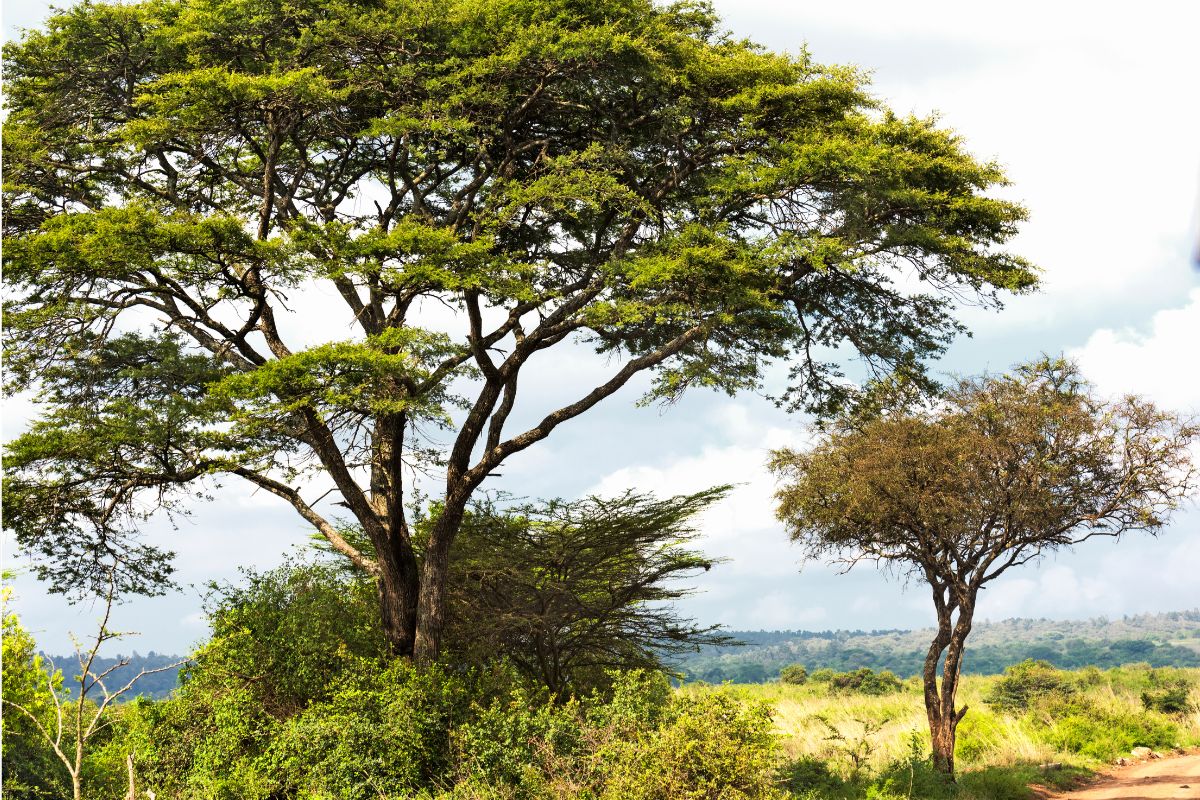
Perhaps the most common tree of Tanzania that you will encounter during your safari is the acacia.
The acacia tree grows in various places across the African continent, and is most famous for being the primary source of food for giraffes.
Acacia trees tend to grow in abundance in Tanzania, then the leaves and stems are enjoyed by giraffes.
When you think about trees in Tanzania, the one that your brain will automatically jump to will be the acacia.
Acacia trees are synonymous with Africa, and have featured in lots of different TV shows and movies.
Across the savanna, you will be hard-pressed to find an area where an acacia tree is not growing.
Acacia trees not only provide food for giraffes and other animals in Tanzania, but they also provide stability to the land.
They are a vital part of Tanzania’s ecosystem, and that is why so many of them exist in this country
Sausage Tree
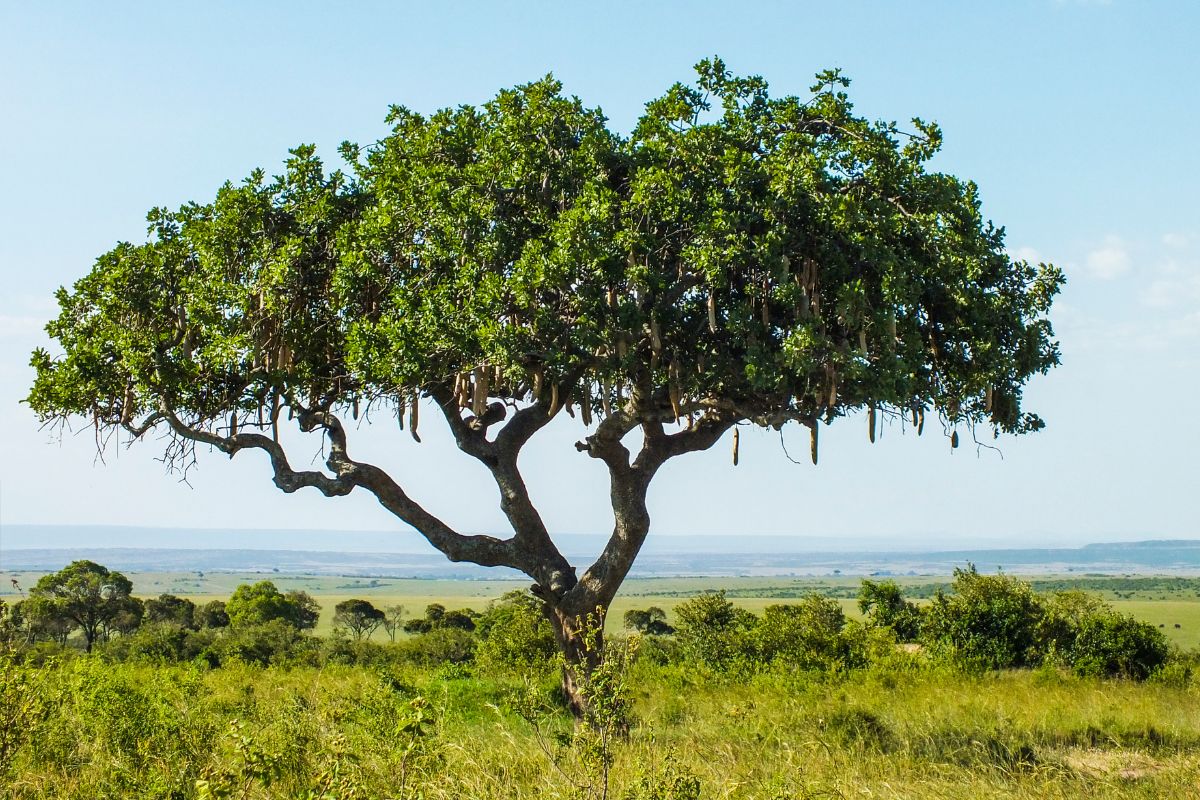
Yes, we know this one sounds like a strange one, but we are almost certain that you will encounter a sausage tree during your safari.
No, this tree does not grow sausages, but the flowers that grow from it do look slightly like them. Hence, the name of this tree.
From a distance, this tree looks truly beautiful. There is no denying that it is magnificent, often growing up to around 20 meters in height.
Not only are they tall trees, they are wide trees too, and this only adds to their beauty. Typically, you will find these trees in the wet regions of sub-Saharan Africa.
While this Tanzanian tree looks beautiful, it doesn’t smell great due to the fruit that grows on it.
However, there is a purpose to this strong and repugnant smell, and that is that it attracts dwarf epauletted fruit bats.
These fruit bats pollinate the fruit of the trees, allowing them to grow healthily.
The fruit itself is poisonous when consumed, however it has successfully been used to make a number of different skin products.
Strangler Fig
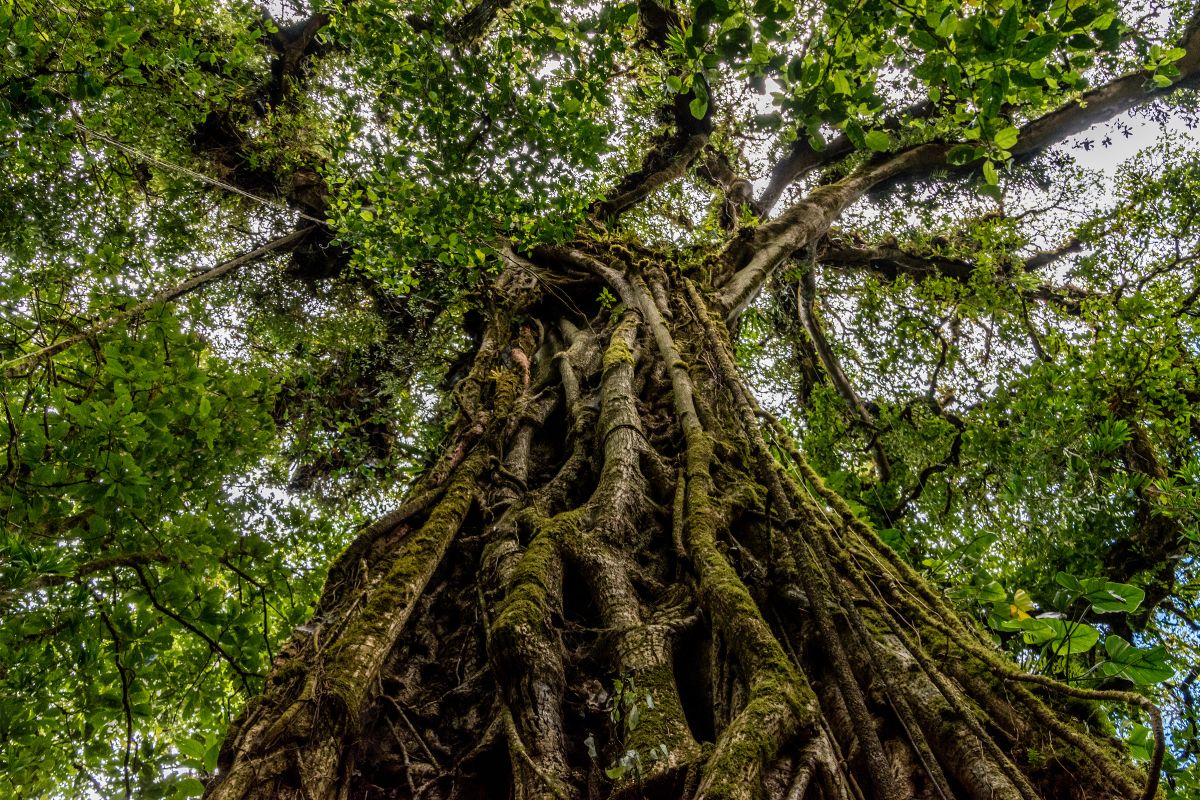
A number of the trees in Tanzania are trees that together make up the canopy within woodland on the Sahara.
The strangler fig is one of the most common of these trees.
They can grow up to anywhere between 6 and 21 meters in height, and they gain their name from their aggressive method of survival.
The strangler fig is a hemiepiphyte. This means that in order for the tree to grow, it must have a host.
The seed of the strangler fig is cast from the canopy down to the ground, from there the seed grows upon the host until the host dies.
When this happens, the strangler fig takes over that position from the host tree.
The method of growth for the strangler fig really enforces how the circle of life not only impacts animals, but plants too.
You will most commonly find this tree in Tanzania near the rivers of the Serengeti.
Toothbrush Tree
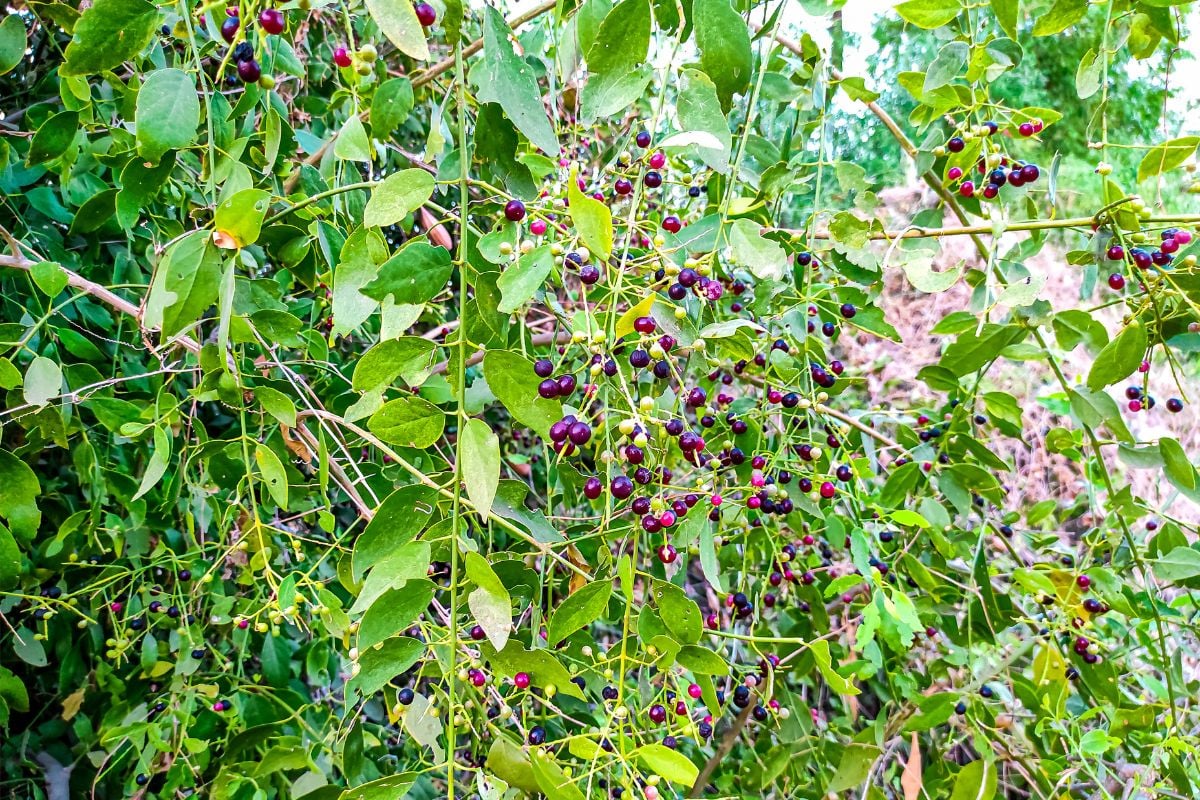
When you think of a tree, it is likely that you picture a tall tree. A tree that towers over all the plants and wildlife surrounding it.
However, the toothbrush tree is the opposite of this. While the toothbrush tree will be tall in comparison to a human, it actually only measures around 4 to 6 meters in height.
So, in comparison to most of the other trees in this guide, it is pretty short. It is its height that makes this tree so easily recognizable.
This tree is not known as a toothbrush tree because it looks like a toothbrush.
Instead, it has earned this common name as it was the source material of traditional toothbrushes (then known as tooth sticks) in many areas.
However, its use in dental hygiene has since been questioned.
The toothbrush tree is a type of evergreen shrub, with a traditional brown trunk, and green leaves.
The leaves of this tree are often used in Tanzania to produce medicine, and even as a salad.
Most of the time, you will see the toothbrush tree standing out brightly against the desert during your safari.
Tanzania trees: a summary
In this guide, we have taken a look at just a handful of the common trees that you are likely to encounter during a safari in Tanzania.
Not only is Tanzania home to lots of beautiful animals, but it is home to lots of magnificent wildlife too. So be sure to keep an eye out for these Tanzania trees during your trip.
Thank you for reading!

